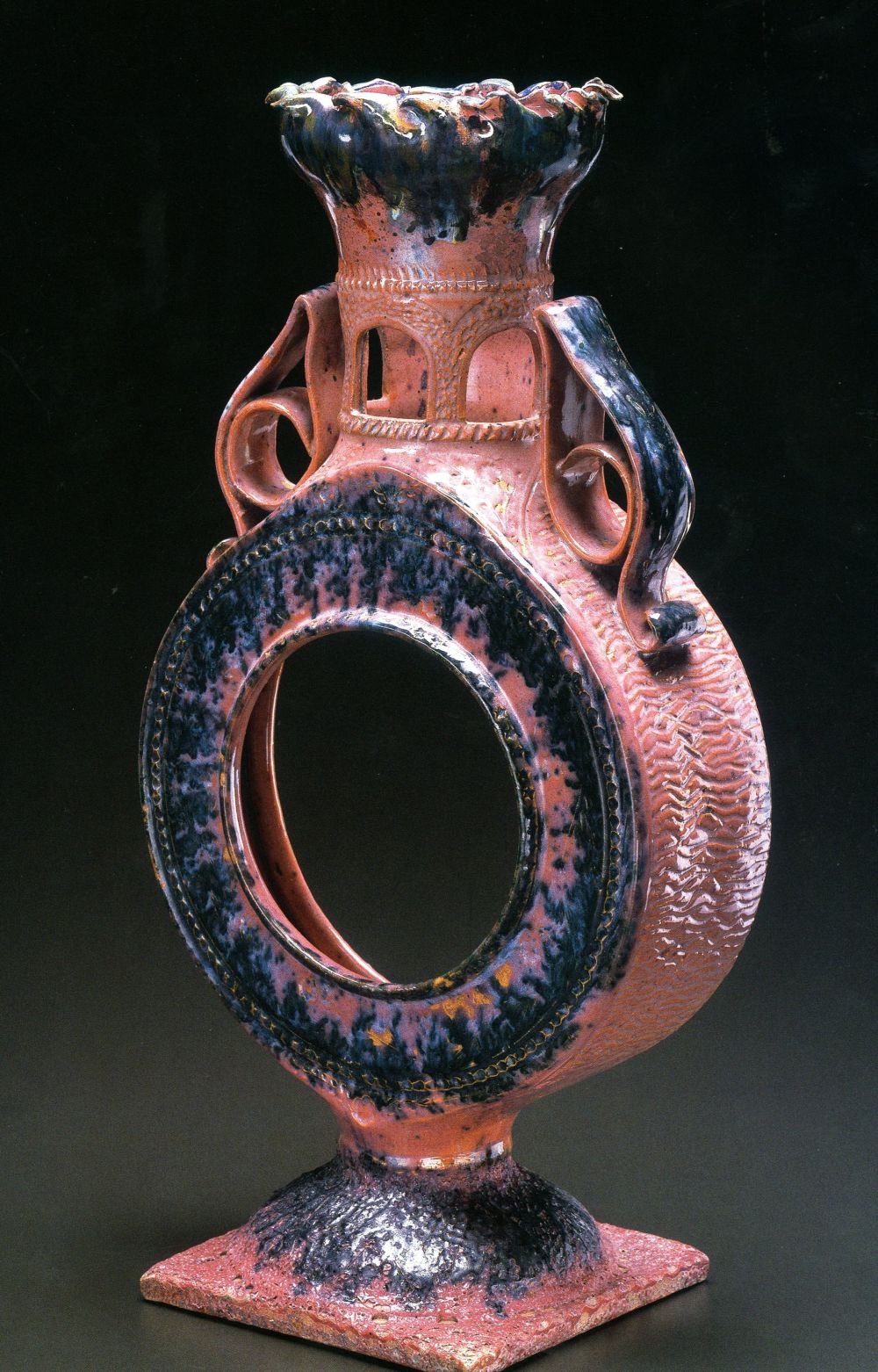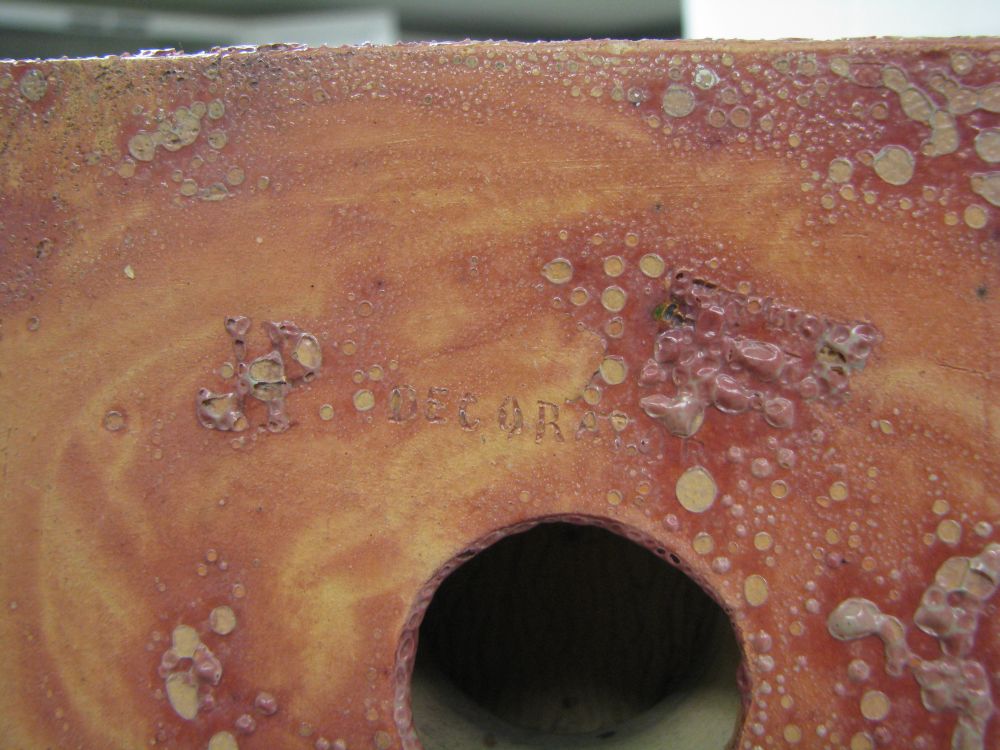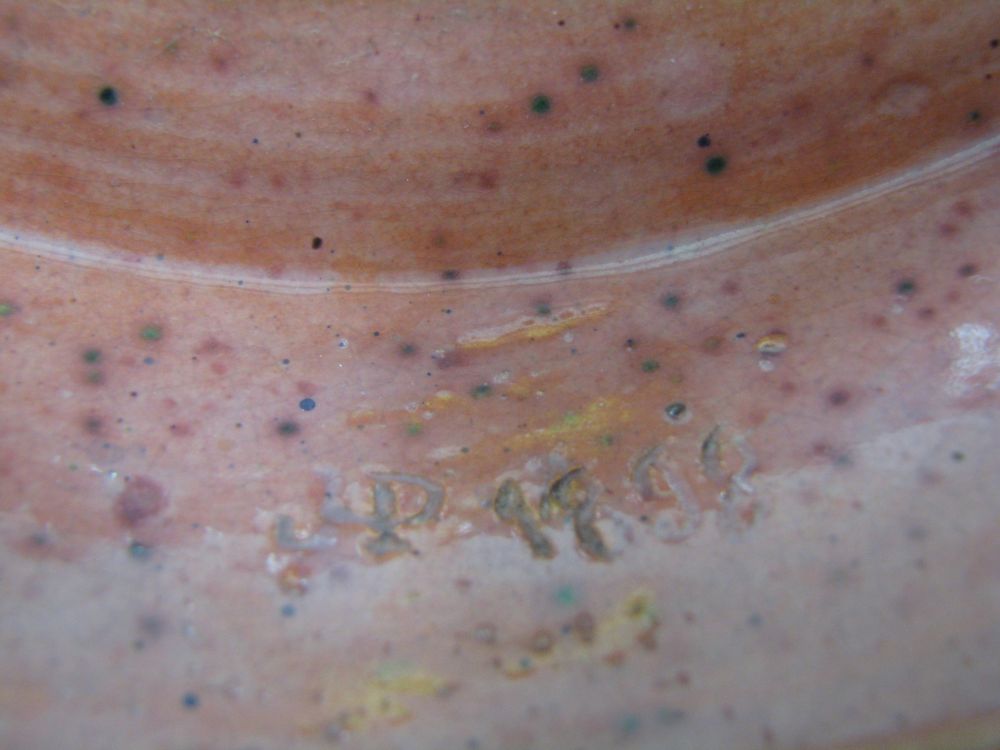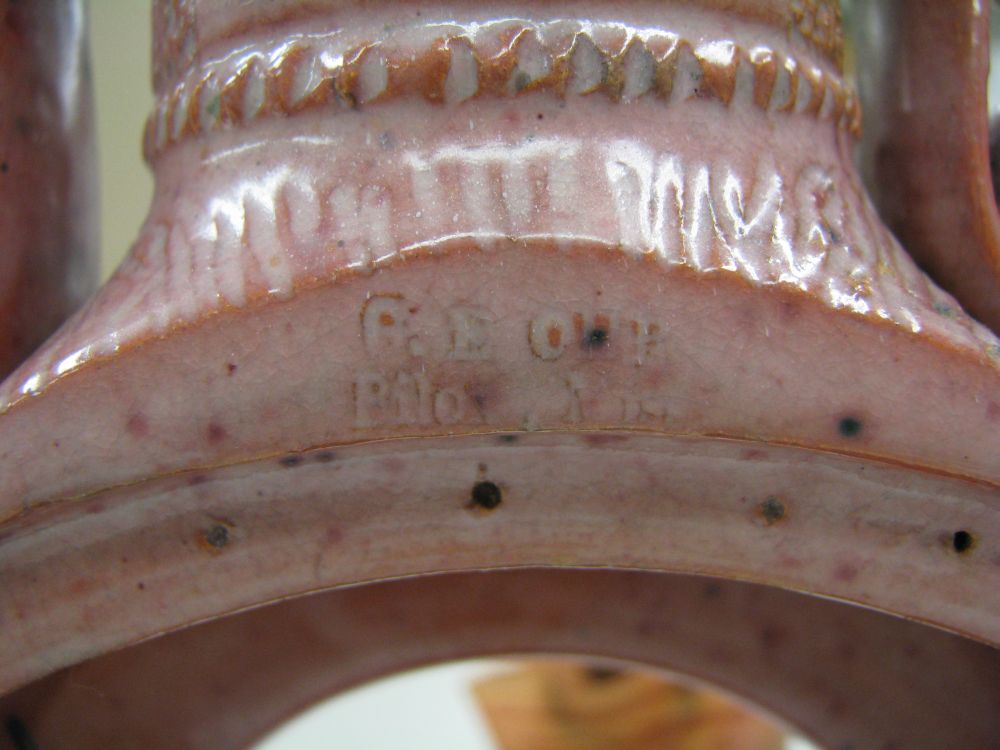Clock case and vase
George E. Ohr American
Decorator John Harry Portman
In many ways George Edgar Ohr was the quintessential Arts and Crafts potter, combining artistic vision with extraordinary skill with his hands. Working in the seaside resort town of Biloxi, Mississippi, he dug the clay, processed and prepared it, threw the shape on the wheel, altered the piece according to his vision, mixed and applied his own glazes, fired the kiln, created his own style of advertising, and took his wares on the road. Ohr’s personal mantra was "no two alike," and he was as eccentric as his work was individualistic, with its manipulated forms on ultra-thin thrown vessels, crimping, ruffling, off-centering, and twisting, to create unprecedented forms for the 1890s. To these forms, he applied his own completely new and unusual glazes, applied by sponging, splashing, and spattering, resulting in works that in many ways anticipated the abstract art movements that would find form decades later.
Although Ohr did virtually all of the work in the pottery himself, throughout his career he called upon some of his many children to help with various labors, and during one period Ohr’s foster son John Harry Portman assisted him. This rare work, a clock case and vase, is initialed and dated "JHP decorator 1898," an inscription that appears along with Ohr’s usual impressed mark. It is perhaps surprising that this fussy concoction—made in several sections from a combination of molded, thrown, and applied parts and with stamped decoration around the circular face—was made as late as 1898, demonstrating that Ohr’s production of such Victorian-tinged work did not cease earlier, as might have been expected.
This work is from the Robert A. Ellison Jr. Collection of American art pottery donated to the Metropolitan Museum in 2017 and 2018. The works in the collection date from the mid-1870s through the 1950s. Together they comprise one of the most comprehensive and important assemblages of this material known. The unparalleled work of George E. Ohr is well represented in the collection. Ellison was an early admirer, collector, and scholar of Ohr’s work and has written extensively on the artist.
#1136. Kids: Clockface vase
Due to rights restrictions, this image cannot be enlarged, viewed at full screen, or downloaded.
This artwork is meant to be viewed from right to left. Scroll left to view more.







